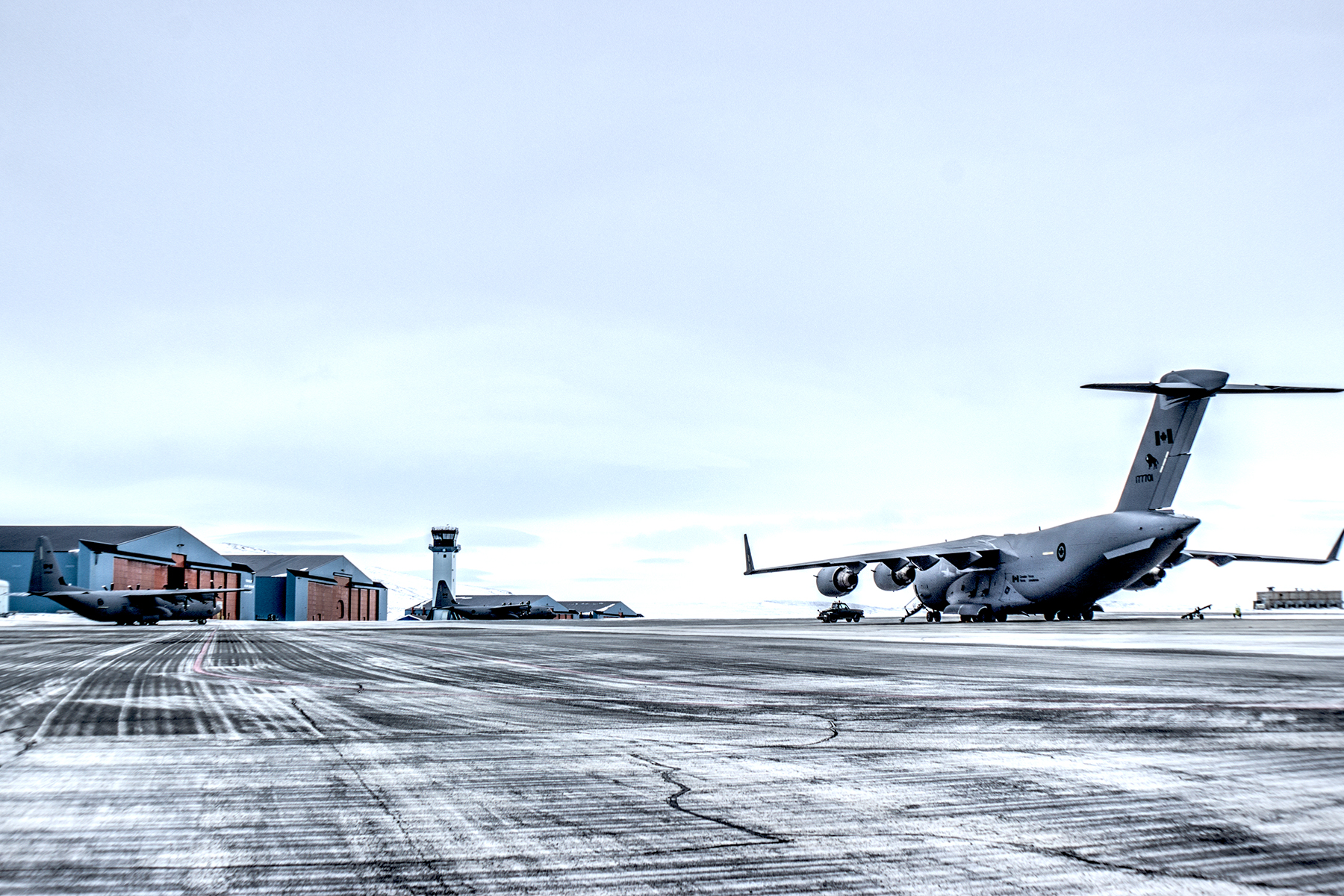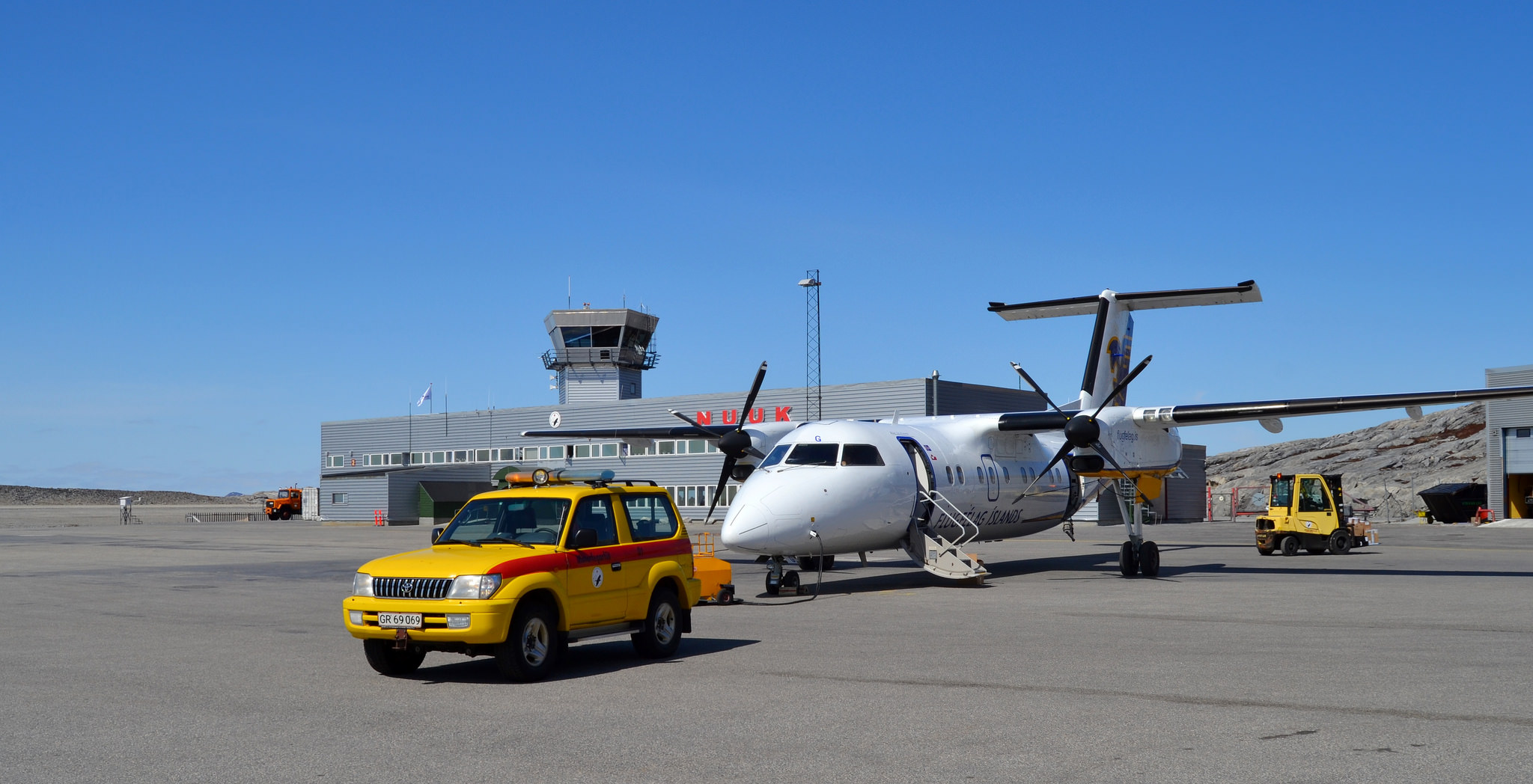China and the US both have strategic designs for Greenland
But neither is being especially open about them.

Two seemingly unrelated messages, reaching us only a few days apart, recently revealed how Greenland occupies an increasingly strategic place in today’s geopolitics.
One of the messages might mean that the U.S. will soon send more troops, planes and other military equipment to Greenland; the other means that China’s growing and apparently semi-secret Arctic ambitions should probably be scrutinized in a new light.
First, a message came from Thule Air Base far up in the western parts of Northern Greenland. The US Air Force has run this base since the 1950’s and it is still a crucial facility in the defence of the American heartland, in particular since it provides early-warning of potential nuclear missiles from Russia, North Korea and China and because of its impressing array of antennas that pick up intelligence from military satellites and forward it to the US. I spent some days there last year and left with a clear sense that I had for long been deceived by the remoteness. The remoteness does not make the base less important, on the contrary. It is precisely the proximity of the base to the countries on the other side of the Arctic Ocean that gives the base its significance.
On Sept. 16, while visiting Thule Air Base, U.S. Undersecretary of Defense for Policy, John Rood signed a declaration of intent to invest in dual-use military and civilian infrastructure that was swiftly disseminated to the public via Facebook by the U.S. Embassy in Copenhagen.
“In light of world events, the US acknowledges the increasing importance of the Arctic,” the message read. “This Statement of Intent lays out the principles for investments in Greenland to enhance US military operational flexibility and situational awareness…the US Department of Defence intends to pursue potential strategic investments vigorously….for example…in projects related to the airport infrastructure in Greenland that may have dual civil and military benefits. These investments would seek to enhance US and NATO capabilities in the North Atlantic region…”
It was a seemingly concrete, but really very opaque message, raising more questions than it answered.
It was impossible for ordinary mortals to know if it meant, for instance, that the U.S. Air Force will soon expand far beyond Thule Air Base and build more airports for fighter jets and bombers in Greenland. It could be read in that way, but for the uninitiated the wording left everything in the air. Is the U.S. Air Force concerned over Greenland’s own plans for new airports? Or was the message really to say that the U.S. does not tolerate any Chinese involvement in Greenland?
Keep your eyes peeled
John Rood’s declaration of intent was made public at a supremely sensitive moment. Denmark and Greenland are currently embroiled in a controversy over new airports in Greenland. Naalakkersuisut, the Self-Rule government in Nuuk, wants to enlarge the airports in Nuuk, the capital, and in Ilulissat, the main tourist attraction in Greenland and to build a new airport in the south.

A Chinese company, China Communications Construction Company, is among the five companies pre-qualified for the construction. Denmark worries that China’s involvement could potentially land Greenland in a painful debt-trap and compromise its security. To keep China from becoming involved, Danish prime minister Lars Løkke Rasmussen has offered to invest some $100 million and to secure low-interest loans that would greatly ease Greenland’s financial burden and make Chinese funds (and probably also CCCC’s entrepreneurial skills) irrelevant. This offer led go the collapse of the ruling coalition in Nuuk, since one of the coalition’s parties feared renewed Danish influence in Greenland. John Rood’s message came right in the middle of all this, and most press reports linked it to this very current, Danish-Greenlandic discussion.
Then, finally, one of Denmark’s leading security analysts, Henrik Breitenbauch, head of the Center for Military Studies at the University of Copenhagen, offered a more scholarly interpretation of John Rood’s message.
Writing in Weekendavisen he explained that in his analysis the U.S. declaration had less to do with the local discussion, even if the U.S. would certainly share Denmark’s distaste of Chinese involvement in Greenland. The U.S. message, rather, should be read as a reflection of a very real shift in American military priorities. The U.S. is focusing its military still more on the defense of the North American continent. It is a shift of direction in the entire international engagement of the U.S. Breitenbauch laid out how this shift will mean “less focus on the fight against terror in North Africa and the Middle East and more focus on the Atlantic and the Pacific, and in addition on Russia, China and other nations with the capacity to directly harm the U.S., such as Iran and North Korea.”
This means, Breitenbauch explained, that the northern part of the Danish realm — Greenland in particular — will once again become highly relevant in a global security perspective. “Decision makers in Copenhagen and Nuuk should keep their eyes peeled and follow events very closely,” he wrote.
He reminded us how the U.S. Navy has revived its Second Fleet, which was superbly important during the Second World War but taken out of service in 2011. This Second Fleet has recently been brought back to life and given responsibility for the defense of the northeastern part of the U.S. and all waters to the North Pole.
In extension, Breitenbauch predicted, the U.S. Air Force may very well chose soon to strengthen its monitoring of Russian subs in the North Atlantic and its defense of Thule Air Base. This is how we should understand John Rood’s message, he argued. It could lead, he wrote, to “massive increase of American military — in particular airborne — capacities in Greenland. Because of the extreme conditions and enormous distances even temporary deployment of limited numbers of advanced fighter planes will demand very large operative and logistical support structures with men and material on the ground. It would be at a level we have not seen since the Cold War.”
China on its way, too
A few days after John Rood’s message, Anne Marie Brady visited Denmark and lectured at Copenhagen Business School. Anne Marie Brady is a professor at the University of Canterbury in New Zealand, a fellow at the Woodrow Wilson Center in Washington and one of the world’s most prominent China scholars. She has studied for 30 years the Chinese party state system and, for the last 10, China’s polar ambitions. In 2017 she published the immensely detailed and well documented “China as a Polar Great Nation,” the first book ever to comprehensively investigate in one go China’s Arctic and Antarctic strategies, public statements, hidden policies, polar budgets and investments, concrete polar expeditions and activities.
In Anne Marie Brady’s analysis, China sees the polar regions as it does the great oceans and outer space: As strategic frontiers decisive for the future of the world and for world dominance.
“China has studied other great powers. John F. Kennedy talked about how a great power will be able to be dominant in outer space, in the high seas, and China has added the polar regions and the cyber domain as new strategic territories that are owned by no one. China is expanding into areas of the world where there is room to move, and where it really is a question of whether you have got the capacity, the human resource and the financial resources to expand into them,” she told me.
She stresses repeatedly how China’s formal statements and document, published in English and aimed at a foreign audience, would often reveal only the benign, while China’s real intentions, its underlying strategies and priorities would remain either hidden or only accessible to those mastering Chinese.
“Within the party state system information management is a very important tool. So if countries like Denmark and Greenland want to have a sound China policy they need to look beyond what they are told in English and into the Chinese discourse. There will be a very selective message targeted to foreigners about China’s policy, especially on a sensitive and emerging policy areas as the Arctic is, and a very different discourse in the Chinese language when China explains to its own population, why it is putting so much money into a territory outside China,” she said.

Chinese polar endeavors, she explains also in her book, really pursue three overriding priorities: China’s national security, including its economic and military security; natural resources necessary for China’s continued growth and stability; and science and technology needed for China’s quest to become a leading world power.
So when China is rapidly establishing science stations in the Antarctic and in the Arctic, it is certainly to conduct climate and other natural science, but also to prepare for resource extraction and advance China’s defense capabilities — including its satellite based Beidou-system; a Chinese equivalent to the GPS-network of the US. China does not want to be dependent on a system that the U.S. controls; instead it now has ground receiving facilities for its own in Sweden’s Arctic, in Svalbard in the Norwegian Arctic and more are on the way. China and Iceland will open a joint research station in northern Iceland on October 22 and China’s has plans also for a ground receiving station in central Greenland and for a large research station elsewhere in Greenland. As Anne Marie Brady explains in her book, China needs all this for climate science but also for other purposes, some military: The Beidou-system will help it navigate in the polar regions with ships, planes and submarines. The U.S. and Russia both have nuclear missiles aimed at China. In a worst-case scenario many of these would traverse the Arctic on their way to China, and China is busy expanding its satellite-based tracking and monitoring capacity.
“Greenland is important and interesting to China because it is in the Arctic, because it has strategic resources and because it is increasingly autonomous. China is always interested in soon-to-be independent states. Greenland is strategically significant as other great powers have known; the US has had bases there for a long while, and it would be useful for China to have a satellite station there for the Beidou-system. So there are many elements that makes Greenland interesting to China as part of its overall Arctic agenda,” Brady told me.
Welcoming the U.S.
In Greenland, there is still very little Chinese presence on the ground. Long-standing Greenlandic efforts to lure Chinese investors have so far come to only little — even if China may have many future designs. Large Chinese corporations have invested in perhaps-to-be mining operations, but that is about it.
Perhaps this was part of the reason that John Rood’s message was given such a warm welcome by Naalakkersuisut, the Self-Rule government.
“We welcome the American Statement of Intent, and look forward to discuss details of possible US airport investments in Greenland. The Greenland Government is prepared to put great emphasis in a dialogue securing mutual benefits. In this respect, we see the United States Department of Defense statement as a positive initiative”, said Greenland’s then Minister for Education, Culture, Church and Foreign Affairs, Vivian Motzfeldt — a few days before the ruling coalition collapsed.
Greenland often confirms its firm place in the NATO alliance and only wants to make sure that it benefits tangibly from any new U.S. activity in Greenland.
Denmark made it clear that it is also in full support of whatever lies behind Rood’s statement:
“Looking ahead, increasing civil and military activity in the Arctic will call for expanded presence and surveillance. With the Danish Government’s Defense Agreement running until 2023, we will continue the strengthening of our presence in the Arctic. And we appreciate the close cooperation with the U.S. on Arctic Affairs, including improving operational capabilities,” said Danish Minister of Defense, Claus Hjort Frederiksen.